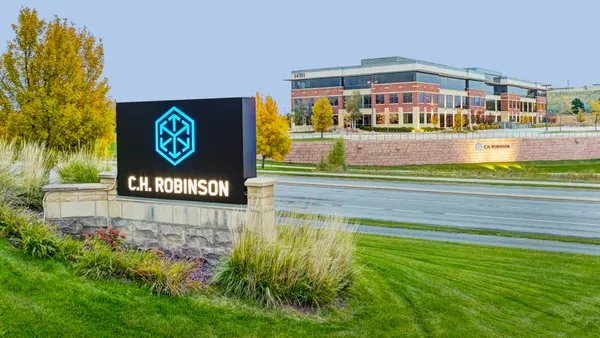Dive Brief:
- Trucking is now in the "climate crosshairs" more often, as the industry experiences regulatory and other political pressures to use renewable fuels, Glen Kedzie, energy and environmental counsel to the American Trucking Associations, said during a U.S. Bank webinar on the transport sector Tuesday.
- Transportation creates 28% of all greenhouse gases (GHG). Within that subset, light vehicles, such as cars, make up 61% of transportation-related GHG. Heavy-duty trucking makes up 23% of transportation-related GHG, Kedzie said.
- Interest in green trucking is coming from shippers, customers, employees and public officials, said Kedzie. Twelve states and the District of Columbia have also banded together to create the Transportation and Climate Inititiative, to reduce transport-related GHG.
Dive Insight:
Kedzie addressed the policymaking confluence that is bringing together businesses, public officials and consumers to address climate change. But the task for trucking is not likely to be easy, he said, as he went through slides of what California will require of truck sellers in the future.
Kedzie referenced actions by the the California Air Resources Board, which unanimously passed its Advanced Clean Trucks, or ACT, regulation on June 25. By 2045, the rule will require every new truck sold in California to be zero-emission.
The rule also requires OEMs to sell an increasing percentage of zero-emission trucks in California between 2024 and 2035.
Some fleets are not waiting for further mandates.
J.B. Hunt Transport will aim to reduce carbon dioxide equivalent, or "CO2-e," per million ton-miles by 3% by 2025, the carrier said Aug. 7. The company's sustainability metrics fall in line with the Sustainability Accounting Standards Board, a nonprofit that develops and maintains sustainability reporting standards.
California is not the only government to watch for trends. The European Union is requiring a 60% cut in GHG by 2050. City cars will not be conventionally fueled, and 50% of freight transport greater than 186 miles will be shifted to rail.
In the United States, trucking accounts for 6%-7% of GHG. But supply chains have more than just one part, Kedzie said, and the overall chain can multiply trucking's GHG by four to five times.
U.S. companies have responded by developing green buildings, using sustainable packaging and by recycling. Many efforts are voluntary, not required by U.S. law. Kedzie said the ATA will try to lead by example by moving into a new headquarters in Washington, D.C., in 2022 that is certified as LEED, or Leadership in Energy and Environmental Design, by the U.S. Green Building Council. The ATA is currently headquartered in Arlington, Virginia.
LEED is one of a number of private compliance programs that Kedzie discussed. Other programs and tools included the SmartWay Transport Partnership, an organization which seeks to increase efficiency in the supply chain.











